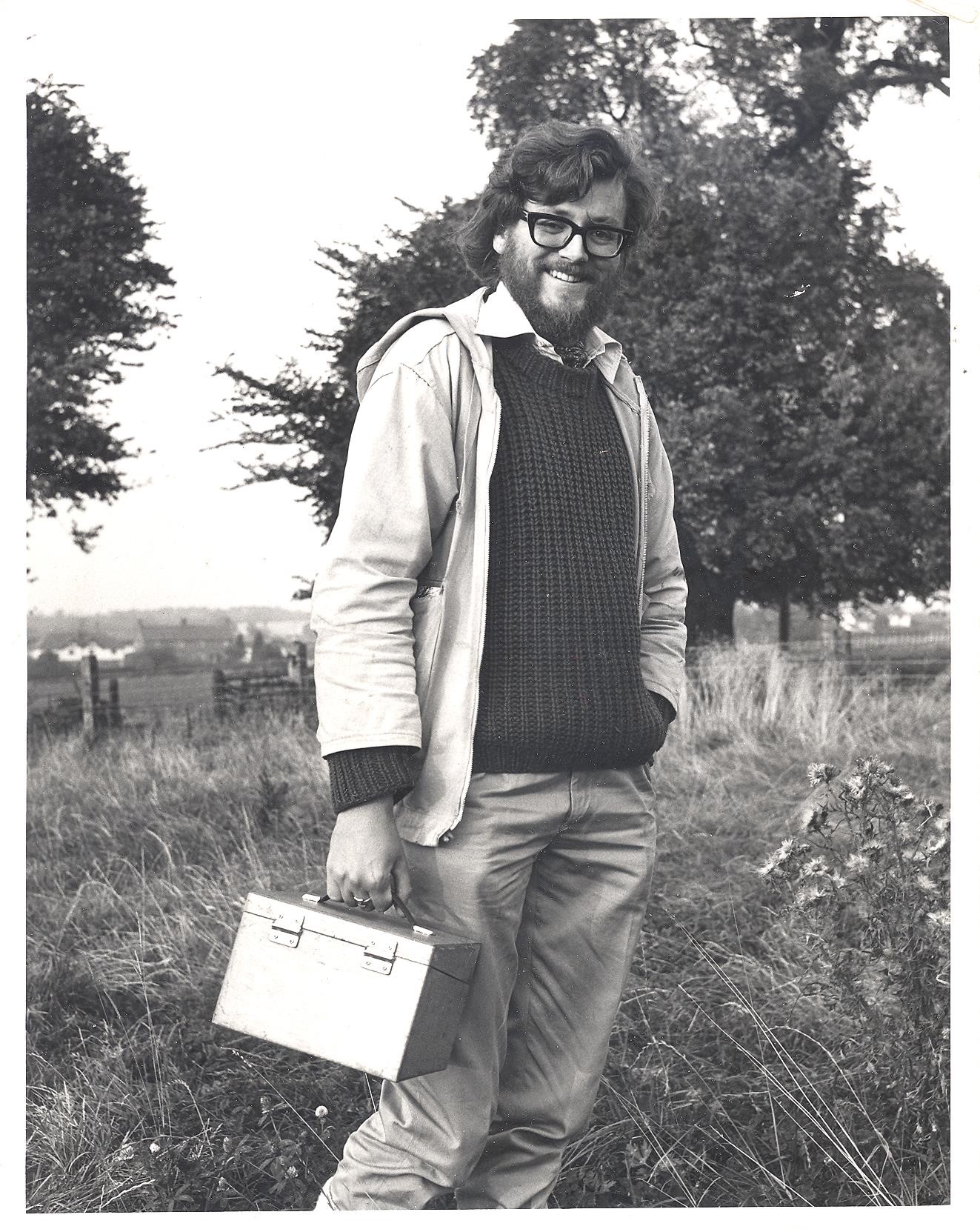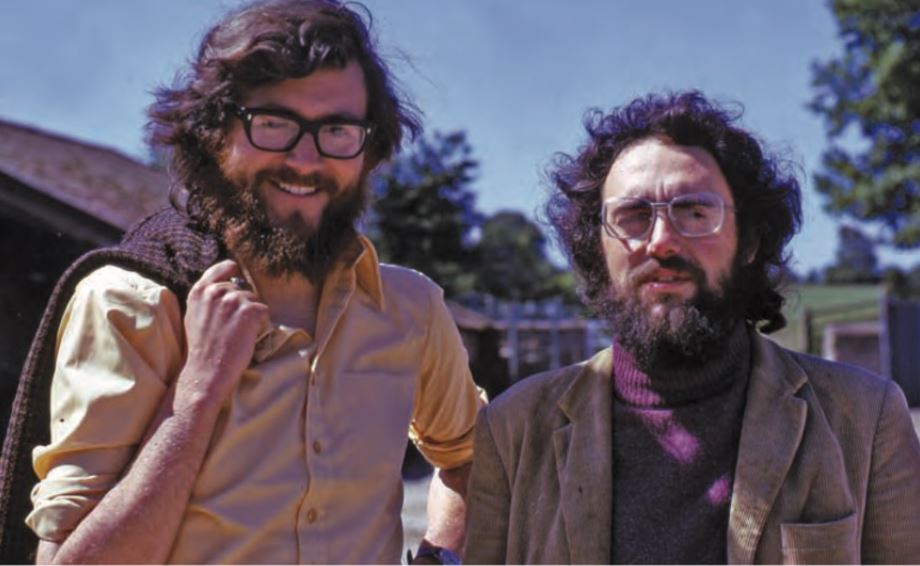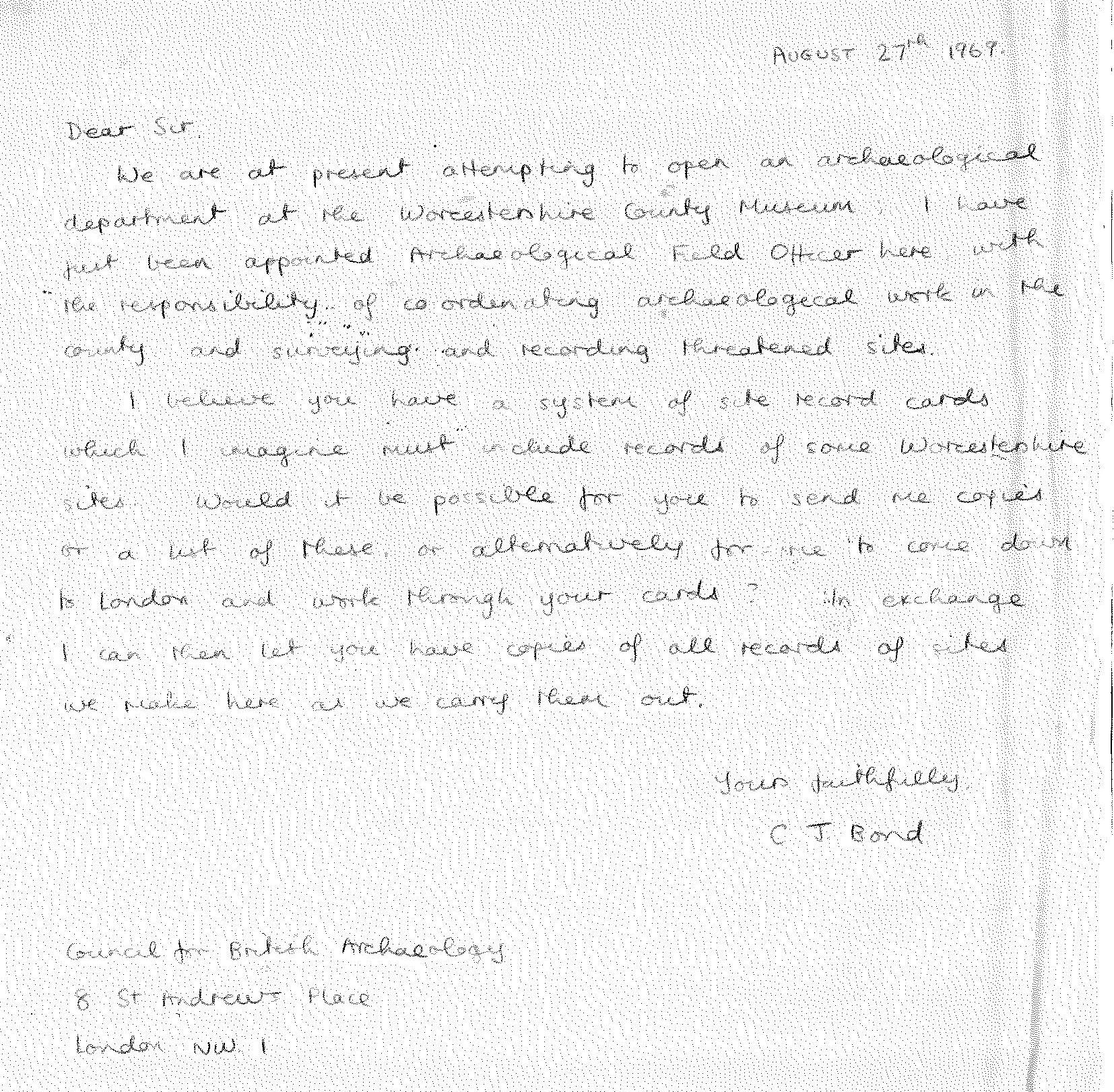Thrown in at the Deep End: the First Five Years of the Archaeology Service in Worcestershire, 1969-74
- 12th September 2019
To mark 50 years since the first County Archaeologist for Worcestershire was appointment we have asked all who’ve held the post to write a piece for the blog providing their memories. James Bond was the first to be appointed.
What follows is a brief summary of the experience of Worcestershire’s first county archaeologist at a time when the responsibilities of the post were still vaguely defined and flexible. It was an exciting period of discovery and engagement with the public, when the primitive foundations of the present Historic Environment Record were first laid down

James Bond at Halesowen Abbey c1973
In today’s archaeology profession it would be utterly unthinkable for a 24-year-old geography student, equipped only with a BA degree and three years of research experience, to take on the responsibilities of a county archaeologist in his very first job. That is what happened to me in 1969. Looking back, I wonder how I ever got away with it. My only advantage was that six years at Birmingham University had given me a greater familiarity with Worcestershire than other applicants for the job. I was fortunate to be able to draw upon the advice of Birmingham University archaeologists Phil Barker, Graham Webster and Philip Rahtz, and remain deeply grateful for the support and encouragement they gave me.
The late 1960s were a time of rapid organisational change in archaeology, prompted by alarm about the unprecedented threats to archaeological sites posed by urban redevelopment, new roads and pipelines, gravel extraction, and the impact of factory farming. One response to this crisis had been to seek to establish an archaeologist’s post in every county. Most of the first generation of county archaeologists appointed through the 1960s and 1970s were based in planning departments. Worcestershire was unusual in attaching the post to a museum which formed part of the county’s Education Department. Though this hindered direct involvement in the planning process, it had real advantages in allowing a much more positive connection with the general public.
Initially my biggest handicap was that I had not yet learned to drive – even getting to Hartlebury Castle for my job interview had been a challenge. I hoped that expressing a willingness to take driving lessons might keep open my chances of landing the job. One of the interviewing panel enquired whether I could ride a horse, which would have been an interesting alternative ! I signed up for driving lessons, striking terror into the hearts of motorists in Kidderminster; and, as a stopgap until I passed my test, I acquired a small red moped named Æthelflæda. She was not a particularly dignified or comfortable means of transport. It was not much fun returning home on her, late at night after giving evening lectures in distant corners of the county, sick with cold, to the unheated caravan on Hartlebury Common where I spent my first winter. Life became a little easier the following year, when I was able to move into a small terraced house in Stourport and when the museum acquired a vehicle reserved primarily for my use after I passed my driving test.

James Bond with Mick Aston in 1975
I always regarded myself as an historical geographer and landscape historian rather than a ‘proper’ archaeologist. I had enjoyed working on excavations as a research student, but spending weeks digging pits and postholes attracted me less than investigating the wider landscape and surveying earthworks and buildings. This was an exciting time when every exploration produced new discoveries. I made it my priority to begin collecting and collating information on archaeological sites and historic buildings on a card index and plotting them on overlays to the Ordnance Survey 1:10,560 maps, following the model of the Sites and Monuments Record pioneered in Oxfordshire by Don Benson. A generous donation by Arnold Baker of his aerial photos of crop marks in the Severn and Avon valleys was an important early contribution.
I loved the variety of the Worcestershire landscape, and retain particular fondness for places which sparked off interests which have engaged me throughout my subsequent career. Halesowen Abbey provided my first encounter with the Premonstratensian canons, an order which I have since explored across Europe. Substantial remains of its medieval church were entangled within later buildings of a working farm, surrounded by earthworks of fishponds and precinct banks. Despite being on the edge of the Black Country, the abbey retained a sense of remoteness, and I remember spotting kingfishers there on several occasions. The great barn at Middle Littleton became another favourite spot after finding an overlooked passage in the medieval chronicle of Evesham Abbey which indicated a construction period 60 years earlier than that previously accepted (subsequently confirmed by dendrochronology). The chronicle documented numerous other works undertaken by individual abbots, inspiring an interest in investigating the landscape of monastic estates through multi-disciplinary studies, since applied widely elsewhere.
The Museum’s educational role gave me licence to undertake missionary work, talking about local archaeology to numerous non-specialist organisations, in addition to teaching evening classes for Birmingham University’s Extra-Mural Department. With the invaluable help of Linda Babb I also had some involvement in preparing museum displays and temporary exhibitions, as another way of reaching a wider public. Perhaps my most significant achievement was to secure in 1973 a second appointment at the museum with responsibility for rescue excavation. That post was taken by Alan Hunt, who succeeded me when I returned to Oxfordshire in 1974.
James Bond
You can hear James speak about his time here on Monday 23 September when he talks at the first Worcestershire Archaeological Society talk of the season. More details here.

James’ letter to the CBA after his appointment
I well remember James’s great landmark study of the estates of Evesham abbey, published in the Research Papers of the Vale of Evesham Historical Society while he was the county archaeologist. Apart from the thorough fieldwork and documentary research on which the article was based, the artwork (maps, plans, building elevations, reconstruction drawings, etc) was particularly beautiful and all done without the aid of computer graphics. I haven’t met James again since those days, but still remember the energy, imagination, and warm enthusiasm that he brought to the county.